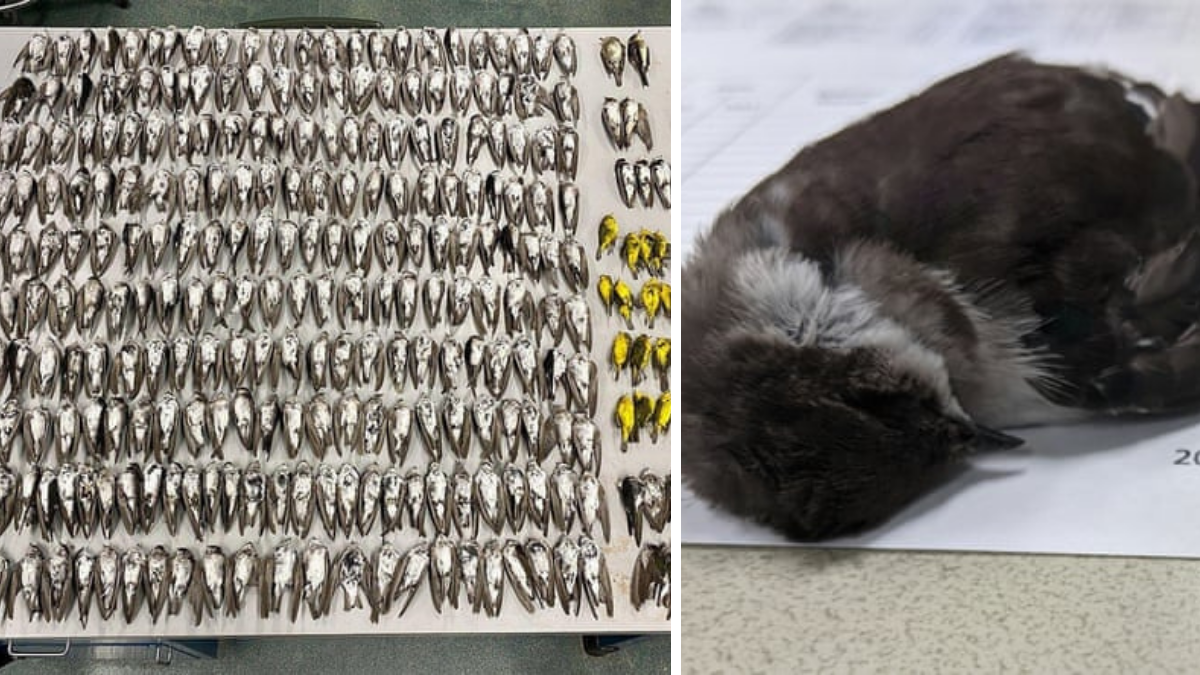Animals
Mass Die-Off of Birds in U.S. Southwest Caused by Severe Starvation
Hundreds of thousands of birds mysteriously dropped dead out of the sky.

When hundreds of thousands of songbirds mysteriously began “falling out of the sky” in September across Western states in the U.S., wildlife researchers were aghast over what possibly could have caused the mass die-off.
Various bird species were discovered to have been injured or simply perished en masse across hiking paths, backyards, and roadsides in states such as Arizona, Colorado, Nebraka, New Mexico and Texas. These included flycatchers, hummingbirds, woodpeckers, loons, swallows and warblers. Many of the birds were also bird and insect eaters migrating from the northern tundra in Alaska and Canada to winter in Central and South America.
Biologists sent the results to the federal laboratories of the U.S. Geological Survey, which found that some 80 percent of specimens were victims of severe starvation – with carcasses displaying such tell-tale signs as emaciated wings, empty stomachs, dehydration, and depleted fat stores, reports Audobon Society.
However, the starvation itself was the result of unseasonably frigid weather conditions linked to the erratic and fast-changing climate conditions caused by humans, according to researchers.
“It looks like the immediate cause of death in these birds was emaciation as a result of starvation,” Jonathan Sleeman, director of the USGS National Wildlife Health Center in Madison, Wisconsin, told the Guardian. “It’s really hard to attribute direct causation, but given the close correlation of the weather event with the death of these birds, we think that either the weather event forced these birds to migrate prior to being ready, or maybe impacted their access to food sources during their migration.”
The climate crisis was already a top culprit in the mass die-off, with experts speculating that the birds perished as a result of a brutal cold front, droughts, or even the tremendous amount of smoke being pumped out of the unprecedented wildfires raging across western states at the time.
While lab results ruled out physical damage from smoke as a factor in most bird deaths, however, many of the migratory birds were likely pushed off-course by the wildfires and into the windy and freezing southwestern snowstorms raging around Sept. 9 or 10, causing them to freeze to death, collide into buildings and cars while in a disoriented state, and die from either the impact or from being consumed by predators.
The birds were also ravaged by the effects of the mega-drought ravaging the U.S. Southwest, which left them vulnerable to the coinciding extreme weather events.
“We’re not talking about short-term starvation – this is a longer-term starvation,” said Prof. Martha Desmond of New Mexico State University’s Department of Fish, Wildlife and Conservation Ecology. “They became so emaciated they actually had to turn to wasting their major flight muscles. This means that this isn’t something that happened overnight.”
“Here in New Mexico we’ve seen a very dry year, and we’re forecast to have more of those dry years,” Desmond added. “And in turn I would say it appears that a change in climate is playing a role in this, and that we can expect to see more of this in the future.”
“I think it’s just very sad … Especially the thought that we are seeing some long-term starvation in some of these birds.”
Desmond, who worked with experts at the Bureau of Land Management and White Sands Missile Range to collect bird carcasses and assess the extent of the losses, had described the losses as a national tragedy.
Those who also worked with the massive influx of carcasses were chilled by the experience of working with such a huge volume of bird carcasses.
“The fact that we’re finding hundreds of these birds dying, just kind of falling out of the sky is extremely alarming,” commented NMSU grad student Allison Salas.
Since 1970, bird populations in North America have plummeted by 29 percent, or three billion birds. According to a 2019 study, rampant high temperatures resulting from climate change are drastically altering the migration patterns of bird species. Likewise, the conversion of pastures and grasslands into large crops has thinned out nesting places, while an accompanying mass die-off of insects eliminated by pesticides has deprived birds of their natural food sources.
Typos, corrections and/or news tips? Email us at Contact@TheMindUnleashed.com
